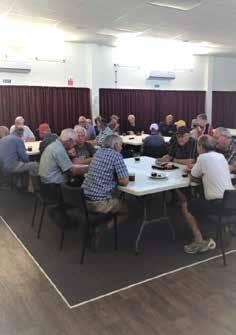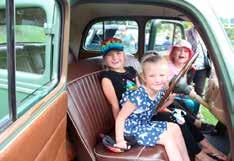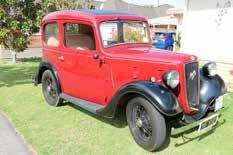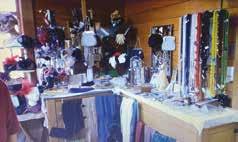
2 minute read
Homestead Run
HOMESTEAD RUN// By Paul Eager
Another stunning Hawke’s Bay day beckoned as we gathered at the Hastings’ Farmer’s Market around 9am, with plenty of club members shopping for breakfast, lunch, or coffee - 32 cars, and almost half of them (15) were English. Rule Britannia, eh! Include a Peugeot and a BMW and it was definitely a European day. We set off shortly after Esther’s 10am briefing over to the Maraekakaho Road, on down SH50, and arrived at Michael Wenley’s magnificent old woolshed and stables about 30 minutes later. An interesting and obviously very historic building, and Michael took the time to explain the history of the farm and the woolshed, which was built in 1883 with a lift for moving wool to and from the upstairs storage. His grandfather bought the farm in 1930. On from there, some drivers by the short direct route along SH50 to Gwavas and some cutting off to the West. The latter (as well as giving us some gravel road driving) climbed to about 500 metres and provided magnificent views across towards the coast, before dropping down amongst the pines in to Gwavas forest and then re-joining SH50. To our second stop – Gwavas homestead and garden. The long-wooded drive from the road to the homestead was impressive enough by itself! Everybody settled on the expansive lawn for lunch, and afterwards our hostess Phyllida , on behalf also of her husband Stu who was away, give us some of the background to this majestic building. Hers is the fifth generation to live here, after the original family had immigrated from




Cornwall, and apparently owned the first Rolls Royce in Hawke’s Bay. The farm had started as 30,000 acres, stretching up to the Maraekakaho farm we had just left, but is now “only” a 20 acre garden and a couple of paddocks. The house was magnificent – full of native timber, with an enormous stained glass window lighting the main staircase and bits of history everywhere. The first house on the farm was built in 1860, then this bigger house in 1890 as a single storey. It had a second floor (including a turret) added in the 1900’s, and then the turret was removed again in the 1950’s. The garden was just as impressive – beyond the large lawns it clearly went for miles, most trees were labelled, and not surprisingly it was full of bird life. All in all a great experience and an excellent day – many thanks to Esther and Graham for the organisation.











